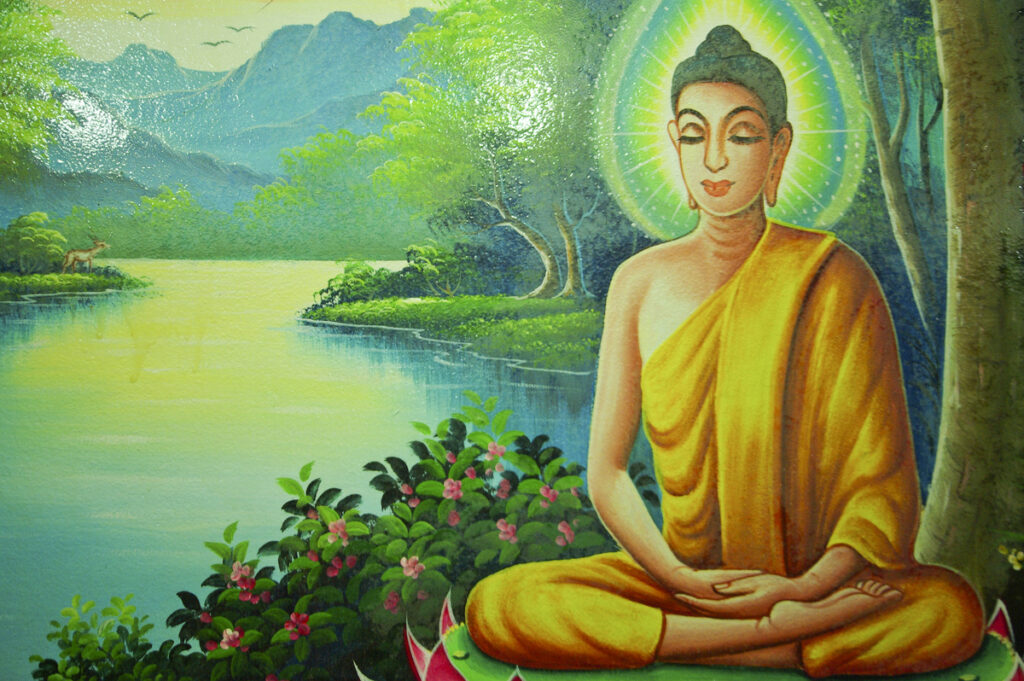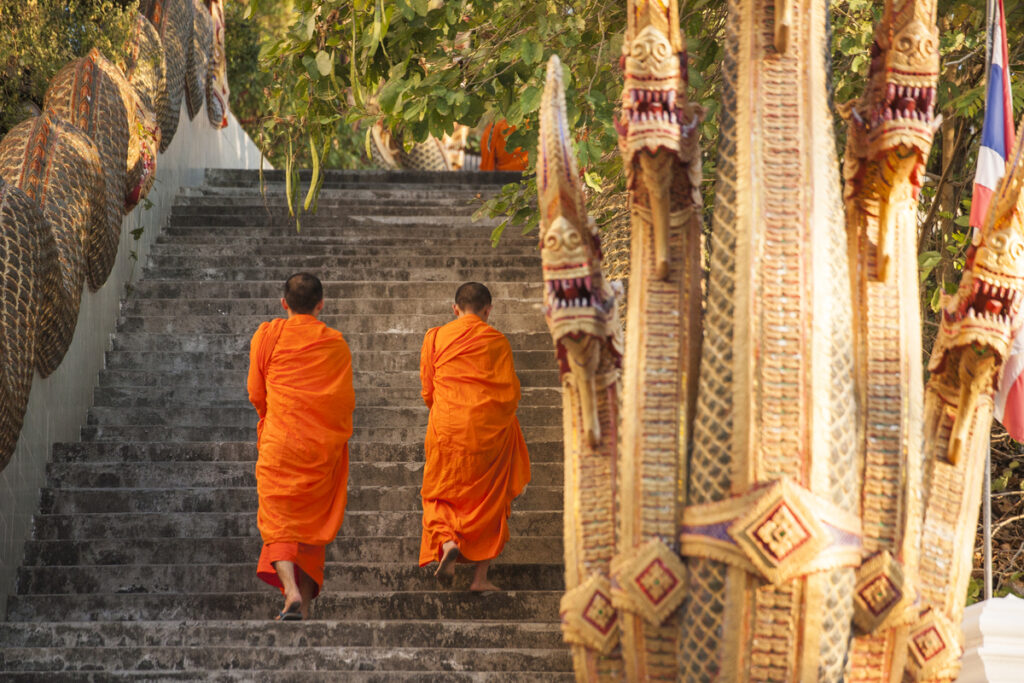Buddhism has a power hierarchy, just like many other major religions. Though it might seem surprising to think of this polytheistic religion as having anything in common with Christianity, Judaism, or Islam, there are quite a few similarities. Still, perhaps the most remarkable likeness among these different faiths is the existence of a strictly adhered social hierarchy. And while any individual can become a Buddhist, very few climb the order to become practicing monks and leaders. But this doesn’t mean that followers shouldn’t embrace their faith and learn more about the leadership of Buddhism. Let’s briefly explore the leadership structure of Buddhism and how it might impact the average believer.

What Is a Buddhist Leader Called?
The Dalai Lama is the ultimate Buddhist leader. This person is the head monk and often spends most of their life in a monastery before becoming the Dalai Lama. Dalai Lama a title, much like the one given to the leader of the Catholic Church. As such, the person fulfilling the role of Dalai Lama changes over time. The current Dalai Lama is a man named Tenzin Gyatso, often called the 14th Dalai Lama. Though he lives outside of Tibet, the Dalai Lama adheres to specific rules and traditions expected of someone in his position. The primary role of the Dalai Lama is to protect, govern, and care for the people of Tibet. Sadly, neighboring China has long questioned Tibet’s independence, leading to political and social turmoil. Consequently, the Dalai Lama must do their best to improve the conditions of Tibetan citizens remotely, as it’s risky to live in Tibet. That’s why the current Dalai Lama lives in India, travels frequently, and does his best to spread awareness of the current situation in Tibet.

How Is the Religious Leadership of Buddhism Organized?
Buddhism organized leadership into a triangular, tier system. At the top is a single individual, the Dalai Lama. At the bottom are millions of followers or pilgrims. Generally, the leadership of Buddhism is organized into the following hierarchy (also called sangha):
- The Dalai Lama
- Buddhist Monks
- Buddhist Nuns
- Buddhist Laymen
- Buddhist Laywomen
- Buddhist Pilgrims
At the top of the Buddhist monastic order is the Dalai Lama. The High Lamas and the government leaders of Tibet choose the Dalai Lama. Buddhists consider the role of Dalai Lama precious, and it often takes quite a while for the two primary committees to decide on a new Dalai Lama. When most Westerners think about Buddhism, they imagine the orange-robed monks living in Tibetan monasteries. Buddhist monks, or lamas, are nearly as powerful as the Dalai Lama. When the current Dalai Lama passes away, the successor is chosen from the existing pool of Buddhist monks. Buddhist nuns are very similar to Buddhist monks. They also work and live in monasteries. However, they’re often viewed as somewhat lesser than their male counterparts, despite the near-identical nature of their worship, work, and beliefs. Buddhist monks and nuns are exceptional caretakers, often spending a significant majority of their day cleaning, farming, and repairing things. However, they often need a little outside help and assistance to maintain their populations. Buddhist laymen bring supplies to Buddhist monasteries to support the monks and nuns living there. Buddhist laywomen perform the same general tasks as laymen, but they’re considered slightly lower. Additionally, Buddhist laywomen may be tasked with lighter, gender-specific tasks such as cooking or sewing. In contrast, laymen might bring live animals or heavy construction materials to nearby monasteries. Both types of Buddhist laypeople are crucial to the upkeep and survival of Buddhist monks and nuns. Believers that visit Buddhist temples and shrines are known as Buddhist pilgrims. You can be a follower and believer in Buddhism, but if you’re not also making an effort to visit important Buddhist sites, you’re not a pilgrim. Unfortunately, the pilgrim is the lowest acknowledged tier.
Leadership and Rules of Buddhism
Each leader, follower, and pilgrim must adhere to a specific set of rules when practicing Buddhism. Understanding these rules can help you form a better, more comprehensive understanding of Buddhism. Fortunately, there are only two significant rule sets you’ll need to learn:
- The Five Precepts
- The Noble Eightfold Path
The Five Precepts are comparable to the Judeo-Christian Ten Commandments. They outline five core beliefs, primarily through highlighting what Buddhist followers should not do. For example, each of the precepts begins with the statement, “I refrain,” or “I abstain.” Those determined to follow The Five Precepts will need to refrain from:
- Taking the life of any living, breathing organisms or beings.
- Stealing.
- Over-indulging in sensual pleasures.
- Lying, gossiping, or slandering.
- Consuming intoxicants that affect perception.
Do not look for a sanctuary in anyone except your self.
Buddha
However, these are just a handful of basic rules that followers are expected to adhere to. Buddhist leaders, including monks and nuns, typically also follow The Noble Eightfold Path. Let’s go ahead and review what this additional rule set entails. The Noble Eightfold Path is essentially a religious lifestyle choice. Those belonging to the Buddhist monastic order often commit themselves to The Noble Eightfold Path throughout their lives. This set of rules focuses on reaching enlightenment by helping followers adhere to The Five Precepts while also controlling their thoughts and feelings.
The Noble Eightfold Path is:
- Right Understanding
- Right Thought
- Right Speech
- Right Action
- Right Livelihood
- Right Effort
- Right Mindfulness
- Right Concentration
By consistently repeating mantras related to these paths, followers hope to live a better, happier, and more rewarding life. Generally, the Dalai Lama is thought to have mastered these principles on their path to enlightenment.
Final Thoughts
Buddhism has existed for thousands of years and has over 500 million followers. When it comes to the leadership of Buddhism, the Dalai Lama is at the top. Buddhist monks, nuns, and laypeople fall beneath the Dalai Lama on the Buddhism hierarchy. At the bottom are general believers and pilgrims.
